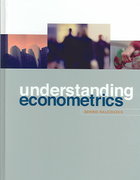Question
Problem 1. Tesla, Inc. is disrupting the distribution model in the automobile industry by marketing cars directly to consumers. By doing so, it is foregoing
Problem 1.
Tesla, Inc. is disrupting the distribution model in the automobile industry by marketing cars directly to consumers. By doing so, it is foregoing some of the benefits of a dealership network: knowledge of local demand conditions and the ability to charge higher prices to those consumers who shop around less. To analyze the situation, suppose that the demand for Teslas Model S in the state of California is given by
P(Q) = 165 6Q,
where the quantity is in thousands of vehicles and the price is in thousands of dollars, as are any costs introduced below. Assume that the marginal cost of producing the Model S is constant and equal to 30 (thousand dollars), which is the figure SpaceXs chief technology officer Tom Mueller quoted in a Skype call with a group from the NYU Astronomy Society. The Model S is differentiated from other electric vehicles on the market, giving Tesla considerable market power.
1. Suppose that in addition to the production costs, Teslas sales operations incur a marginal cost of k per vehicle. Thus, Teslas total marginal cost of producing and selling a Model S vehicle is 30+k. For now, assume that k = 3. Find the profit maximizing number of sales, the corresponding retail price, and the resulting profit (gross of any fixed costs, which we are ignoring here).
2. Now, what is the profit maximizing number of sales and the corresponding retail price for an arbitrary fixed marginal cost of sales, k (where k is a number between 0 and 135).
3. Suppose now that instead of selling directly to consumers, Tesla sells the Model S through a dealership network. It thus avoids the marginal cost of sales, k. For simplicity, assume that all the dealerships are owned by the Penske, which acts as a monopolist when it sets the retail price. To capture the idea that dealerships are better at retailing than car manufacturers, assume that the marginal cost of sales is zero for the dealerships. Thus, Penskes marginal cost of retailing is just the wholesale price, w, set by Tesla. The demand for the Model S is the same as above, as is Teslas marginal cost of production. How many vehicles are sold now? Find the corresponding wholesale and retail prices as well as the resulting profit (gross of fixed costs) to Tesla.
4. Compare your answers above. Why is Teslas profit lower when they sell through Penske, even though the Penske dealerships are more efficient at selling cars (e.g. they have k $3, 000 cost advantage per vehicle in retailing compared to Teslas direct sales)?
5. How much less efficient can Tesla be at retailing and still prefer to sell directly to consumers?
6. Assume now that k = 3. Can you suggest a (specific) contract between Tesla and Penske that would produce more profit for both Penske and Tesla?
Step by Step Solution
There are 3 Steps involved in it
Step: 1

Get Instant Access to Expert-Tailored Solutions
See step-by-step solutions with expert insights and AI powered tools for academic success
Step: 2

Step: 3

Ace Your Homework with AI
Get the answers you need in no time with our AI-driven, step-by-step assistance
Get Started


